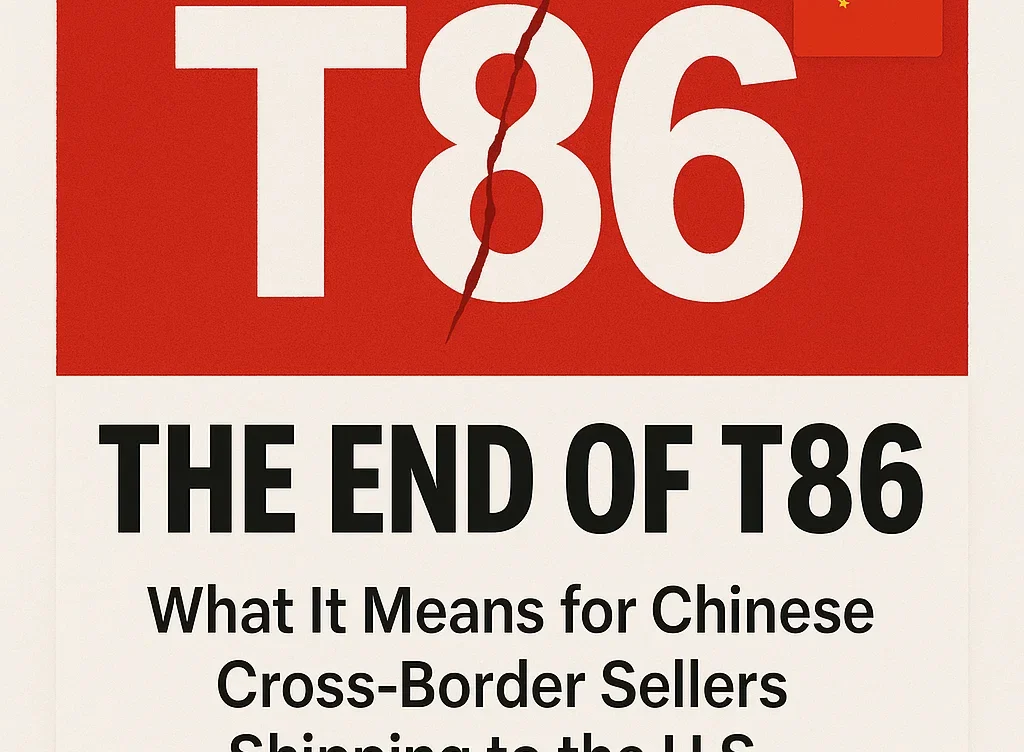
The End of T86: What It Means for Chinese Cross-Border Sellers Shipping to the U.S.
On May 2, 2025, the U.S. officially terminated the use of the T86 clearance method, sending shockwaves across the cross-border e-commerce industry. For years, T86 provided a vital loophole—allowing small parcels (valued under $800) shipped from China to the U.S. to bypass duties and taxes. But now, with the curtain falling on this once-popular route, all packages—regardless of value—must undergo formal customs clearance and pay tariffs.
So, what does this mean for e-commerce sellers? Let’s break it down in simple terms:
Small Package Exemptions Are Gone
The cancellation of T86 means there’s no more tax exemption for small-value shipments. Whether you’re shipping a $5 phone case or a $500 kitchen appliance, it must go through customs clearance, with associated duties and fees.
This ends the old game of under-declaring item value or shipping cheap goods tax-free. Many sellers who relied on this model to compete on price are now forced to rethink their strategies—or shut down entirely.
Costs Have Skyrocketed
Take this example: A pair of $79 Bluetooth headphones used to ship duty-free. Now?
- Customs duties + brokerage fees add up to $15–$20 per shipment
- That’s a 25% cost increase, often wiping out profit margins entirely
- Sellers are forced to either raise prices (risking customer loss) or absorb the cost (eating into profits)
In addition, all packages must now go through licensed customs brokers or clearance agents, adding $20–$50 per parcel in service fees.
Slower Delivery & Higher Inspection Risk
T86 was not only cheaper—it was faster. Under the old system, sellers used USPS, FedEx, or other carriers for direct, often-uninspected deliveries within 3–5 days.
Now:
- Every shipment is queued for customs clearance
- Transit time can stretch to 7–10 days or more
- Inspection risk is higher, especially for electronics, textiles, and other “sensitive” categories
- Delays can cause order cancellations, bad reviews, and even account suspensions
End of the “No-Inventory” Business Model
One of the hardest-hit groups? Sellers who ran “no inventory” models—those who bought products from 1688 or other platforms only after a sale was made, then shipped directly to U.S. buyers using cheap, duty-free channels.
This game is now over. Without exemption:
- Fulfillment is slower
- Costs are higher
- Compliance risks are huge
In short, drop shippers and low-cost resellers are being squeezed out of the market.
What Comes Next? A Shift Toward Capital-Intensive, Compliant Models
The new customs environment favors:
- Sellers with pre-stocked U.S. warehouses
- Branded merchants who can afford compliance and scale
- Stronger partnerships with 3PLs (third-party logistics providers)
- Companies prepared to pay duties, file formal entries, and manage their supply chains end-to-end
The message is clear: Cross-border e-commerce is maturing.
Final Thoughts
The end of T86 clearance marks a turning point for Chinese sellers shipping to the U.S. What was once a “gray zone” of high-volume, low-compliance selling is now facing stricter regulation and enforcement.
For serious sellers, this is a call to professionalize operations, focus on product value, and ensure supply chain compliance. For others, it may be time to pivot—or exit.
If you’re a seller trying to navigate this shift, or a logistics partner supporting cross-border trade, now is the time to reassess your strategy. The rules have changed—and only the adaptable will survive.
